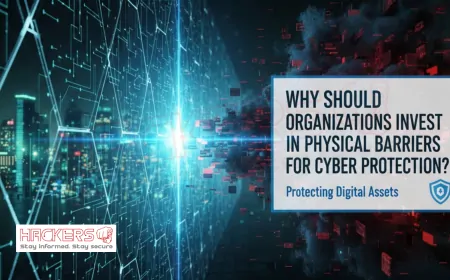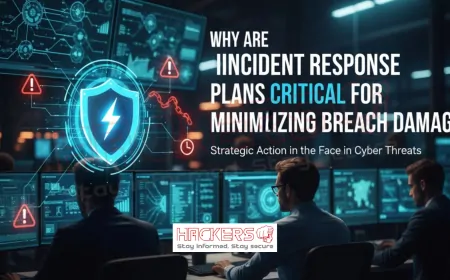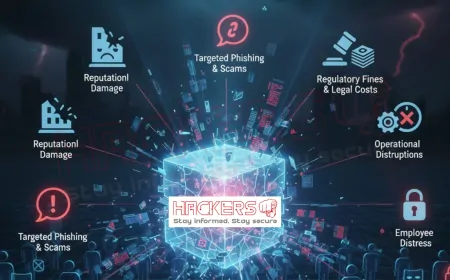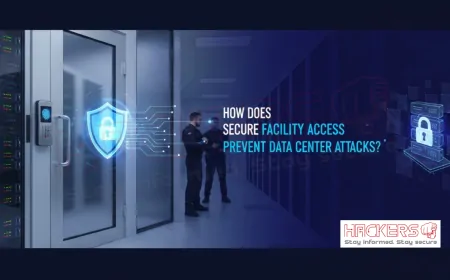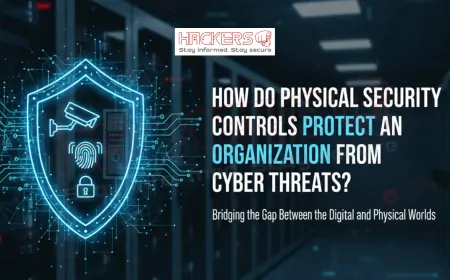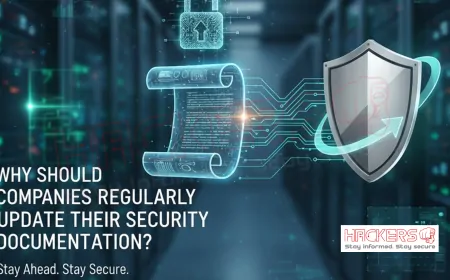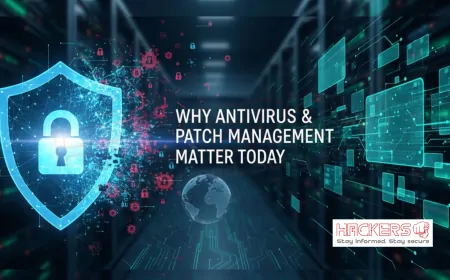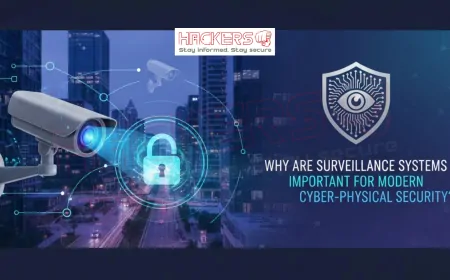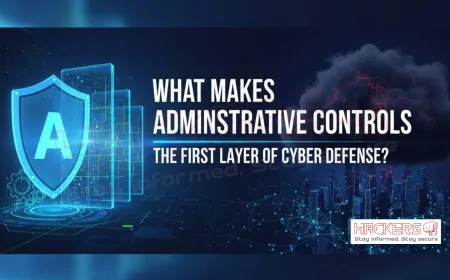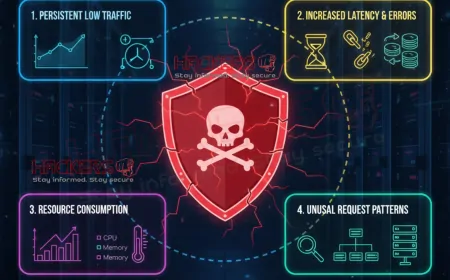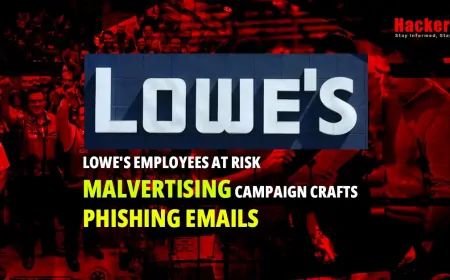Why Should Organizations Invest in Physical Barriers for Cyber Protection?
Picture a busy office late at night. A cleaner, or so they seem, slips past a simple door lock and into the server room. In minutes, they attach a small device to a network port, granting remote access to hackers waiting online. By morning, sensitive data is compromised, leading to millions in losses and damaged trust. This is not fiction: in 2025, physical breaches often pave the way for cyber attacks, with blended threats on the rise. Organizations face escalating risks, from insider threats to sophisticated intrusions. Yet, many overlook a simple yet powerful defense: physical barriers. These are the tangible protections, like fences, locks, and access controls, that stop unauthorized entry before digital harm occurs. Investing in them is not just about keeping doors shut: it's about safeguarding the entire cyber ecosystem. In this blog post, we'll explore why physical barriers are essential, drawing on current trends and practical advice. Even if you're new to security, you'll see how these measures bridge the gap between the physical and digital worlds, protecting assets in an increasingly connected era.
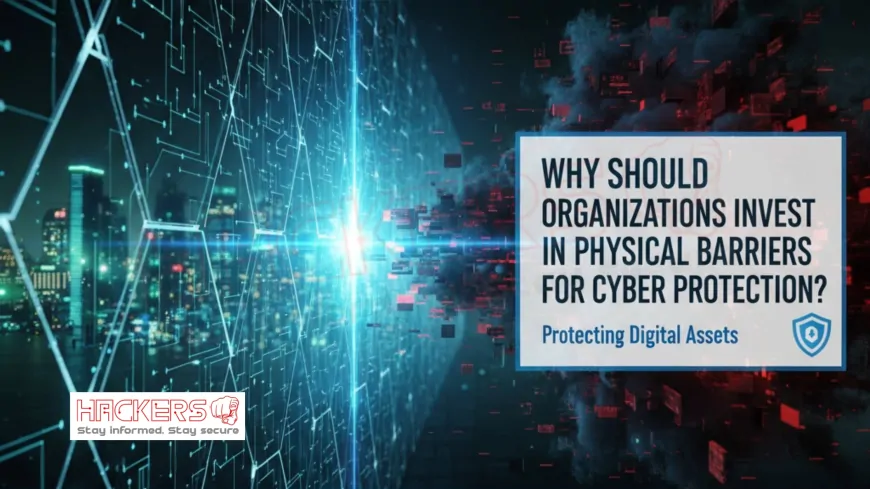
Table of Contents
- What Are Physical Barriers?
- The Link Between Physical and Cyber Security
- Types of Physical Barriers for Cyber Protection
- Benefits of Investing in Physical Barriers
- Real-World Examples of Physical Barriers in Action
- Challenges in Implementing Physical Barriers
- Best Practices for Effective Implementation
- Future Trends in Physical Security for Cyber Protection
- Conclusion
- FAQs
What Are Physical Barriers?
Physical barriers are the first line of defense in any security strategy. They are tangible structures or systems designed to prevent unauthorized access to facilities, equipment, or sensitive areas. Think of them as the walls, gates, and locks that keep intruders out. In the context of cyber protection, these barriers protect the hardware and infrastructure that support digital operations, such as servers, networks, and data centers.
For beginners, it's helpful to understand that cyber threats are not always remote. Hackers can exploit physical weaknesses to gain digital access. A physical barrier might be a high fence around a data center or a locked cabinet for network switches. These measures ensure that only approved individuals can reach critical assets.
In 2025, physical barriers have evolved. They now integrate with technology, like smart locks that require biometric scans or fences with sensors that alert to breaches.
Physical barriers work on the principle of deterrence, detection, and delay. They discourage attempts, spot intruders early, and give time for response. In a world where cyber attacks cost trillions annually, investing here is a smart move.
To put it simply, if cybersecurity is the shield against online threats, physical barriers are the fortress walls that keep the enemy from getting close enough to strike.
The Link Between Physical and Cyber Security
Physical and cyber security are more connected than ever. A breach in one can trigger issues in the other. For example, if someone physically accesses a computer, they might install malware that spreads digitally. This connection is why organizations cannot treat them separately.
In recent years, experts have emphasized this link. Physical security prevents scenarios where intruders bypass digital defenses by being on-site.
Cyber-physical threats are rising in 2025, with AI-enabled attacks and drone misuse among top concerns.
For beginners, consider your home: a strong door lock (physical) protects your laptop (cyber asset) from theft. In businesses, it's similar but scaled up. Regulations like GDPR now require physical protections for data, showing the legal tie.
Investing in barriers strengthens both areas. It creates a unified defense, where physical measures support cyber tools like firewalls. Without this integration, gaps appear, inviting attacks. As threats evolve, this link grows stronger, making barriers a must-have.
Types of Physical Barriers for Cyber Protection
Physical barriers come in various forms, each suited to different needs. Let's explore common types used in cyber protection.
- Perimeter Barriers: These include fences, walls, and gates around facilities. They form the outer defense, often with sensors to detect climbs or cuts.
In data centers, chain-link or welded wire mesh fences are popular for their strength. - Access Control Barriers: Doors, turnstiles, and mantraps control entry. Mantraps are enclosed spaces where one door locks before the next opens, preventing tailgating.
- Internal Barriers: Locked rooms, cages, or cabinets protect servers inside buildings. They limit access to sensitive areas.
- Environmental Barriers: These guard against natural threats, like reinforced structures for floods or fires, which could otherwise expose cyber systems.
- Technological Barriers: Bollards, vehicle barriers, and anti-drone systems prevent advanced intrusions.
Choosing the right type depends on the facility. Data centers often use multi-layered barriers for comprehensive coverage.
Benefits of Investing in Physical Barriers
Investing in physical barriers offers clear advantages. First, they reduce the risk of breaches by blocking unauthorized access. This directly protects cyber assets from physical tampering.
Cost savings are another benefit. Preventing attacks avoids the high expenses of recovery, like the average $4.44 million per breach.
Compliance is easier with barriers. Laws require physical protections for data, and barriers provide evidence of due diligence.
They enhance employee safety and morale. Knowing facilities are secure boosts confidence. Barriers deter threats, making attacks less likely.
Finally, they support business continuity. By preventing disruptions, organizations maintain operations, preserving reputation and revenue.
Real-World Examples of Physical Barriers in Action
Real examples show the value of physical barriers. In one case, a data center used welded fences and sensors to detect an intrusion attempt, alerting security in time to prevent entry.
Another involved a company where mantraps stopped tailgating, avoiding a potential insider-assisted breach.
Contrast with failures: A facility without strong barriers suffered tampering, leading to data loss. But in protected sites, barriers delayed attackers, allowing response.
These stories highlight how barriers turn potential disasters into minor incidents, saving resources and reputation.
Challenges in Implementing Physical Barriers
Implementation has challenges. Cost is primary: High-quality barriers require investment, tough for small organizations.
Integration with existing systems can be complex, especially linking to cyber tools.
Maintenance is ongoing: Barriers need checks to remain effective. Balancing security with accessibility avoids hindering operations.
Solutions include phased rollout, choosing scalable options, and training. Addressing these makes barriers feasible.
Best Practices for Effective Implementation
To implement effectively, follow best practices. Start with a risk assessment to identify needs.
- Layer barriers for depth.
- Integrate with surveillance and access controls.
- Train staff on use and awareness.
- Conduct regular audits and updates.
- Employ security personnel for oversight.
These ensure barriers work well, providing strong protection.
Future Trends in Physical Security for Cyber Protection
In 2025 and beyond, trends shape physical security. AI enhances barriers with predictive detection.
Hybrid-cloud systems offer flexibility. Convergence of physical and cyber is key, with unified platforms.
Drones and autonomous tech address new threats. Privacy-focused designs balance security with rights.
These trends make barriers smarter, adapting to evolving risks.
| Type of Barrier | Description | Cyber Protection Benefit |
|---|---|---|
| Perimeter Fences | Outer enclosures like chain-link | Deters external intruders |
| Mantraps | Enclosed entry points | Prevents tailgating |
| Locked Cabinets | Secure storage for equipment | Protects hardware from tampering |
Conclusion
To wrap up, organizations should invest in physical barriers because they provide essential protection against cyber threats by preventing physical access that leads to digital breaches. From types like perimeters and mantraps to benefits such as cost savings and compliance, these measures form a vital defense. Despite challenges like cost and integration, best practices make them effective. With trends like AI on the horizon, barriers will remain crucial. By prioritizing them, businesses build resilience in a risky world.
What are physical barriers?
Physical barriers are structures like fences and locks that prevent unauthorized access to facilities.
Why link physical and cyber security?
Physical breaches can enable cyber attacks, so they must integrate for full protection.
What types exist?
Perimeter fences, mantraps, locked rooms, and more.
How do they deter threats?
By creating obstacles that discourage and delay intruders.
What benefits do they offer?
Reduced risks, cost savings, compliance, and safety.
Are they expensive?
Initial costs vary, but they save money long-term by preventing breaches.
How prevent insider threats?
With access controls limiting entry to needed areas.
What challenges arise?
Cost, integration, and balancing with operations.
How overcome challenges?
Phase implementation and choose scalable solutions.
Do small organizations need them?
Yes, basic barriers provide essential protection.
What is tailgating?
Following an authorized person inside without permission.
How do barriers help compliance?
They meet legal requirements for data protection.
What trends for 2025?
AI integration and hybrid systems.
Best practice for audits?
Conduct regular checks to ensure effectiveness.
Role of training?
Educates staff on using barriers properly.
Environmental barriers?
Protect against disasters like floods.
Real examples?
Data centers using fences to stop intrusions.
Future with drones?
Barriers will counter new threats like drone attacks.
Impact on morale?
Enhances employee sense of security.
Why invest now?
Threats are rising, making barriers essential.
What's Your Reaction?













